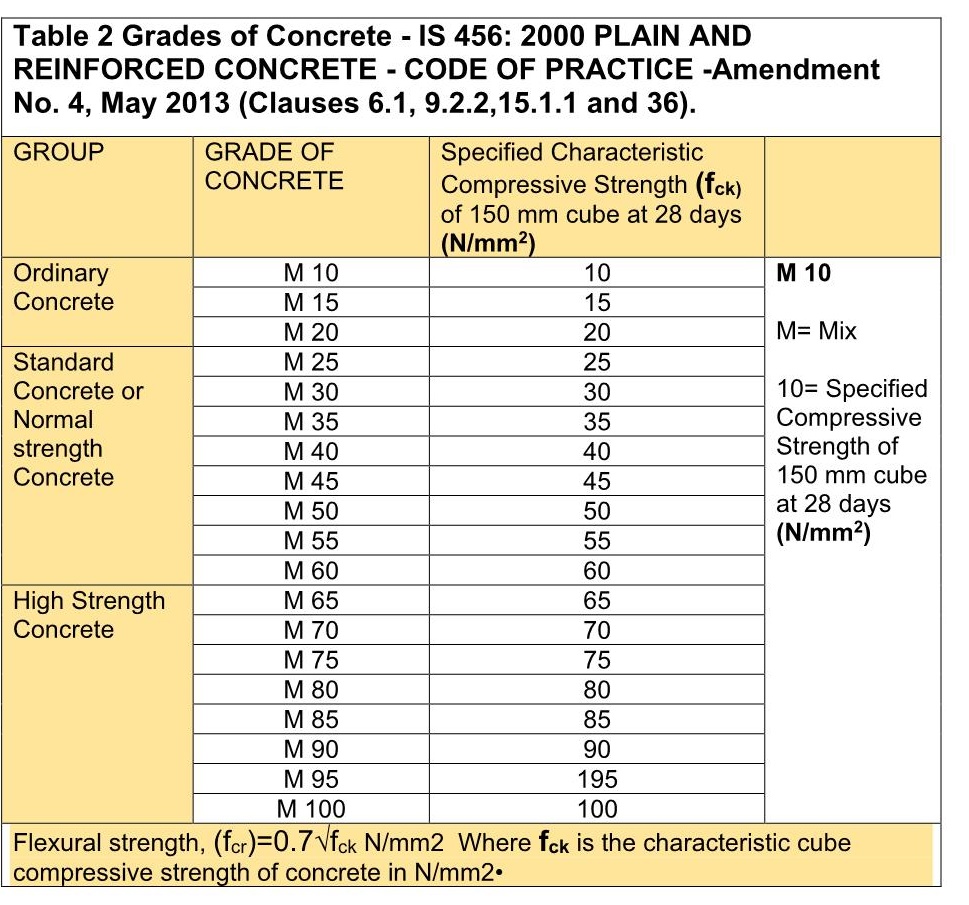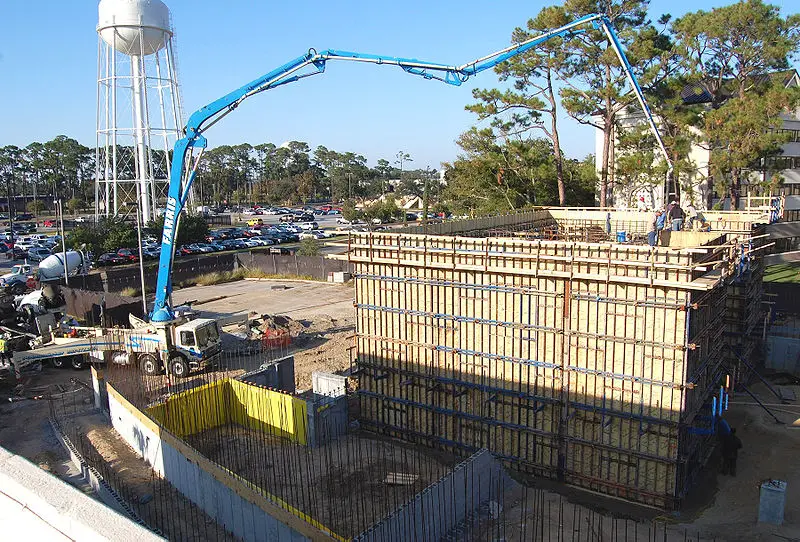General
Concrete is being used since its inception for various works and its production processes are need based on small quantity to large quantities.
Such production units are:
Hand mixing is used for small urgent quantity.
Small portable mixers are used for better quality mixing of concrete
Mobile batching and mixing plants
Ready mix concrete plants (they are popular now as orders can be placed for required need and can be supplied from a centralized place with good quality controls.
Large stationary plants are used in large projects in remote areas where the quantity is very large and is produced in varying grades
Joseph in 1824 got patent for Portland cement. The Portland cement remain in use in the 19th century in plasters and concrete using cement sand FA, CA, and water. Early in the 20th century an up to 1970, the concrete research limited to use of concrete up to 20 MPa strength and its associated mechanical properties.
Types of Concrete
The concrete, as per IS code used at construction sites is of two categories
Nominal Mix Concrete
Design Mix concrete
Mix proportioning of Nominal Mix concrete is discussed under following topics and can be viewed at the web link.
Strength of Concrete
Constituents of concrete
Types of concrete
Tests on concrete materials
Nominal Mix Concrete
Proportioning of Nominal Mix Concrete
Mix proportioning of design Mix concrete is discussed under following topics and can be viewed at the web link.
Proportioning of Design Mix ConcreteData for concrete mix proportioning
Further categories of Design Mix Concrete
Normal Strength Concrete (NSC) is designated up to 40 MPa. Beyond this strength the concrete was developed as High Strength Concrete (HSC). HSC is used in high rise buildings and in structural members bearing high loads. The member size gets reduced using HSC and performance is better about strength and durability
HSC provides a high level of structural performance, especially in strength and durability, as compared (NSC).
ACI defines a high-strength concrete as concrete that has a specified compressive strength for design of 6,000 psi (41 MPa) or greater.
BIS concrete grade is as below:
Further categories of Design Mix Concrete
Normal Strength Concrete (NSC) is designated up to 40 MPa. Beyond this strength the concrete was developed as High Strength Concrete (HSC). HSC is used in high rise buildings and in structural members bearing high loads. The member size gets reduced using HSC and performance is better about strength and durability
HSC provides a high level of structural performance, especially in strength and durability, as compared (NSC).
ACI defines a high-strength concrete as concrete that has a specified compressive strength for design of 6,000 psi (41 MPa) or greater.
BIS concrete grade is as below:
Properties of Concrete
The period beyond 1970 to 1995 brought enthusiasm to researchers and they not only developed the high strength concretes, but also improvised upon the properties of concrete for:
Concrete tensile stress
Balancing the concrete member compression and tensile stresses with the help of rebars
Compactness of concrete
Durability
Permeability
w/c ratio and w/b ratio
Use of admixture
Grading of CA and FA management
Decreasing the size of aggregates for higher strength concrete
Use of fine and ultrafine aggregates
Time related effects on concrete from chlorides, sulphates, carbonation, ASR
Shrinkages
Porosity
Hydration of cement
Use of high range Water reducers (Plasticizers)
And many others
BIS Grades of Concrete

Ultra High -Performance Concrete
The result of this 20th century research and the ongoing 21st century research provides a viable and long-term solution for sustainable concrete construction with the use of UHPFRC owing to its ultra-high strength properties, improved fatigue, abrasion, and impact behaviour and other improvisation related to mechanical properties.
Please refer to our following blog on UHPC
Introduction to Ultra- High-Performance Concrete
Project Concrete Requirement Management
In general, the project concrete requirements should be oriented on points as given below:
Checklist for project Preconstruction conference
Project concrete requirements
Material management
Lab Laboratory set up certification
Field test certification
Project testing needs
Onsite concrete performance and rejection
Transportation and storage of test material
Setting up of Processing and Batching Plants
Production of Concrete
Test result communication
Field Lab vs Main Lab outcomes
Measurement / Acceptance concrete
Concrete placement and Finishing
Tests on Fresh concrete
Tests on hardened concrete
Reporting Requirements
Concrete mix design requirements
Tests on hardened concrete
Concrete placement and pumpability management
End

